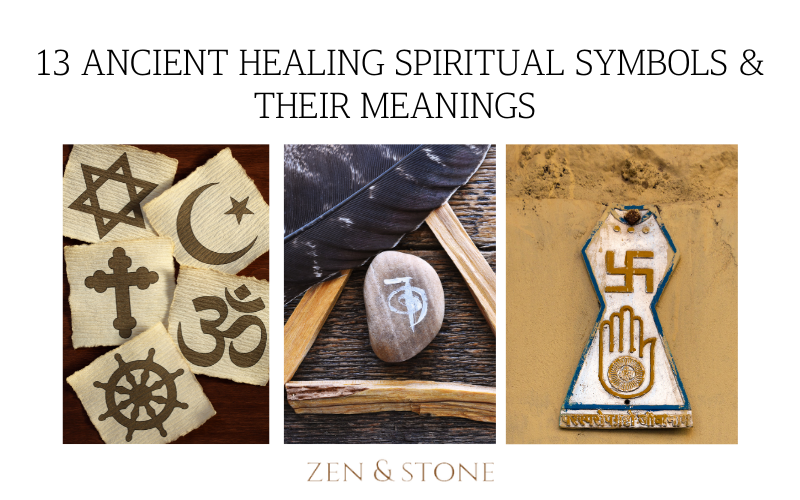
29 Sep 13 Ancient Healing Spiritual Symbols & Their Meanings
Ancient cultures across the world have long used spiritual symbols for healing and protection. These symbols are believed to have the power to connect individuals with the divine and promote physical, emotional, and spiritual well-being. In this article, we will explore 15 ancient healing spiritual symbols that everyone should know about.
The origins of these symbols are diverse, ranging from ancient Egyptian and Hindu cultures to Native American and Celtic traditions. Despite their different appearances and meanings, all of these symbols share a common thread of promoting healing and balance. Understanding the significance of these symbols can help individuals connect with their spiritual selves and harness their healing power.
Key Takeaways
- Ancient cultures across the world have long used spiritual symbols for healing and protection.
- The 15 ancient healing spiritual symbols explored in this article have diverse origins and meanings.
- Understanding the significance of these symbols can help individuals connect with their spiritual selves and harness their healing power.
Origins of Ancient Healing Symbols
Healing symbols have been used for thousands of years across multiple cultures and religions. These symbols were believed to have the power to heal and protect individuals from harm. The origins of ancient healing symbols can be traced back to various civilizations such as Ancient Egypt, Greece, and India.
In Ancient Egypt, the Ankh symbol was used to represent eternal life and was often associated with healing. The ankh symbol is a cross-like shape with a loop at the top. The loop is believed to represent the sun rising above the horizon, while the cross represents the earth. The Ankh symbol was often used in funerary art and was believed to help the deceased in the afterlife.
In Ancient Greece, the Caduceus symbol was associated with the Greek god Hermes, who was the messenger of the gods. The Caduceus is a staff with two serpents winding around it and is often used as a symbol of medicine. However, it is important to note that the Caduceus is often confused with the Rod of Asclepius, which is a staff with a single serpent winding around it and is the true symbol of medicine.
In India, the Om symbol is used in Hinduism, Buddhism, and Jainism and is believed to represent the sound of the universe. The Om symbol is often used in meditation and is believed to have healing properties. The symbol is made up of three Sanskrit letters, which represent the three states of consciousness: waking, dreaming, and deep sleep.
Understanding Spiritual Symbols
Spiritual symbols have been used for centuries across different cultures and religions to represent various concepts and beliefs. These symbols are often associated with healing, protection, and enlightenment. Understanding the meaning behind these symbols can help individuals connect with their spirituality and enhance their overall well-being.
One of the most common spiritual symbols is the Om symbol, which is used in Hinduism, Buddhism, and Jainism. It represents the sound of the universe and is believed to bring inner peace and harmony to those who chant it.
Another popular symbol is the Lotus Flower, which is associated with purity and spiritual awakening. In Buddhism, the Lotus Flower represents the journey towards enlightenment and the ability to rise above obstacles.
The Yin-Yang symbol is another well-known spiritual symbol that represents the balance between opposing forces, such as light and dark, good and evil, and masculine and feminine energies. It is often used in Taoism and Chinese philosophy.
Other spiritual symbols include the Eye of Horus, which is associated with protection and healing in ancient Egyptian culture, and the Hamsa Hand, which is believed to bring good luck and ward off evil in Jewish and Islamic traditions.
Overall, spiritual symbols hold a significant meaning and can be a powerful tool for individuals looking to connect with their spirituality. By understanding the meaning behind these symbols, individuals can use them to enhance their overall well-being and spiritual growth.
The Ankh
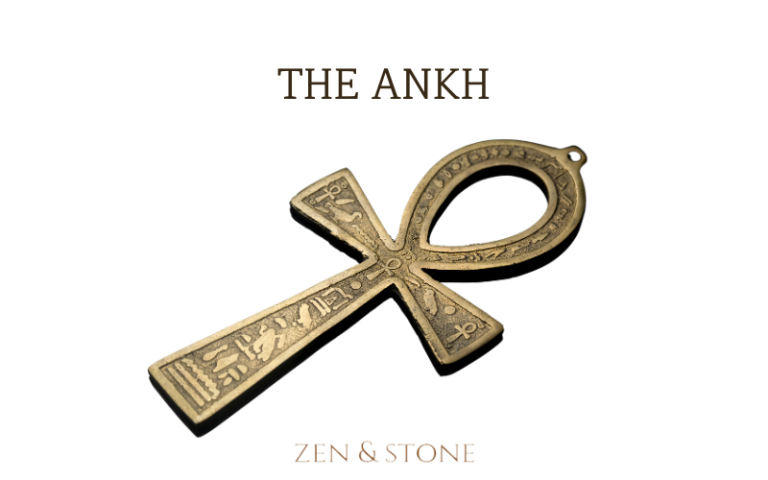
The Ankh is an ancient Egyptian symbol that represents life, both physical and eternal. It is also known as the key of life or the breath of life. The symbol is shaped like a cross with a looped top, and it is often depicted being held by gods and pharaohs.
The Ankh is believed to have originated in the Nile Delta region of Egypt during the Old Kingdom period. It is said to have been inspired by the shape of a sandal strap. The symbol was used in many different contexts, including as a hieroglyphic character, a religious symbol, and a talisman.
One of the most important meanings of the Ankh is its association with eternal life. In Egyptian mythology, the Ankh was often depicted being held by gods and pharaohs, who were believed to have the power to grant eternal life. The symbol was also used in funerary contexts, where it was believed to help the deceased transition to the afterlife.
The Ankh is also associated with the concept of regeneration and renewal. It is often depicted being held by gods and pharaohs who are shown pouring water over the head of a deceased person, symbolizing the renewal of life.
In addition to its religious and funerary associations, the Ankh was also used as a symbol of fertility and prosperity. It was often depicted being held by goddesses, who were believed to have the power to grant fertility and abundance.
Overall, the Ankh is a powerful symbol that has been used for thousands of years to represent the concept of life, both physical and eternal. Its association with renewal, regeneration, and prosperity has made it a popular symbol in modern times as well.
The Eye of Horus
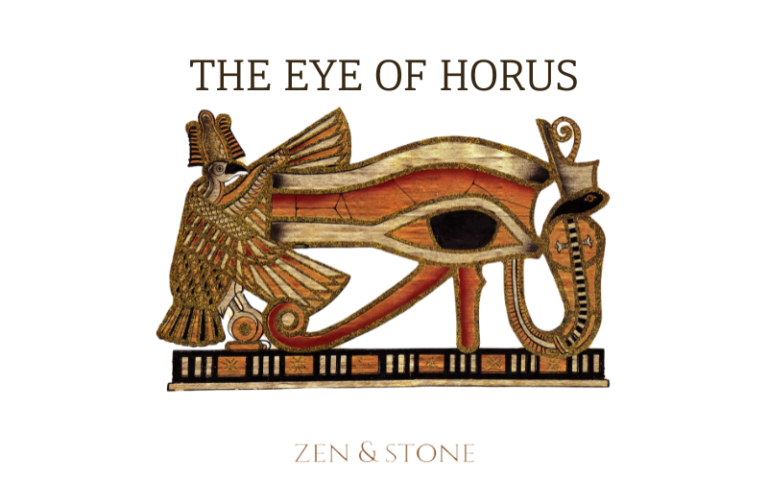
The Eye of Horus is an ancient Egyptian symbol that represents knowledge, health, and protection from evil. It is also known as the Udjat Eye, which means “sound” or “whole” eye. The symbol is a stylized human or falcon eye that is often depicted with markings that resemble the markings of a falcon.
In pre-dynastic Egypt, the Eye of Horus was held in high esteem as a strong symbol of regal power, protection, and well-being. It was believed that the eye had healing powers and could restore health to the sick and injured. The symbol was also used as a protective amulet, worn by both the living and the dead, to ward off evil spirits and protect against harm.
According to Egyptian mythology, the Eye of Horus is associated with the god Horus, who was the son of Osiris and Isis. Horus was often depicted as a falcon or a man with a falcon head. He was the god of the sky and of hunting, and he was also associated with the sun and with resurrection.
The Eye of Horus is often associated with the third eye, which is said to be the seat of intuition and spiritual insight. In this context, the symbol represents the awakening of spiritual consciousness and the attainment of higher levels of awareness.
Overall, the Eye of Horus is a powerful symbol that has been used for thousands of years to represent knowledge, health, and protection. It is a symbol that continues to be revered and respected by many people today.
The Om
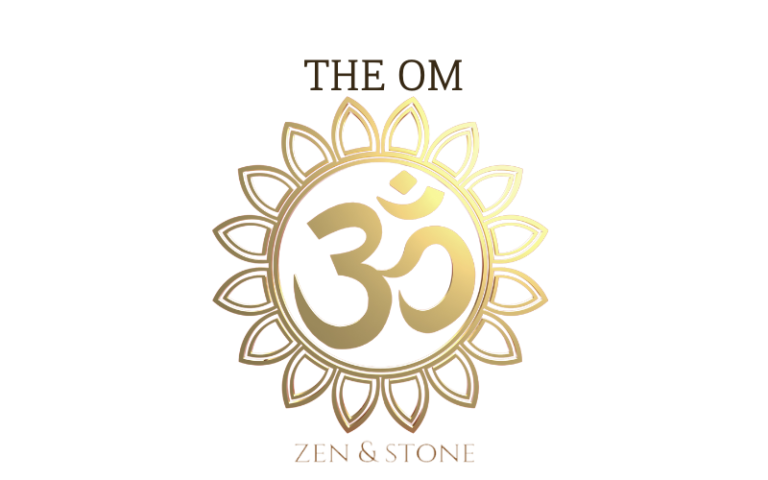
The Om symbol is a sacred sound and spiritual icon in Hinduism, Buddhism, and Jainism. It is also known as Aum or Omkar and is considered to be the most important mantra in the Hindu tradition. The symbol is made up of three curves, a semicircle, and a dot. The curves represent the waking, dreaming, and deep sleep states of consciousness, while the dot represents the fourth state, which is the state of pure consciousness.
The Om symbol is believed to be the sound of creation and is chanted during meditation and yoga practices. It is said to have a calming effect on the mind and body and can help to reduce stress and anxiety. The symbol is also believed to represent the unity of all things and the interconnectedness of the universe.
In addition to its spiritual significance, the Om symbol is also used in modern culture as a symbol of peace, harmony, and balance. It is often used in jewelry, clothing, and home decor, and is a popular tattoo design.
Overall, the Om symbol is a powerful and meaningful symbol with deep spiritual and cultural significance. Its use in meditation and yoga practices can help to promote inner peace and well-being, while its presence in modern culture serves as a reminder of the importance of unity and interconnectedness.
The Lotus
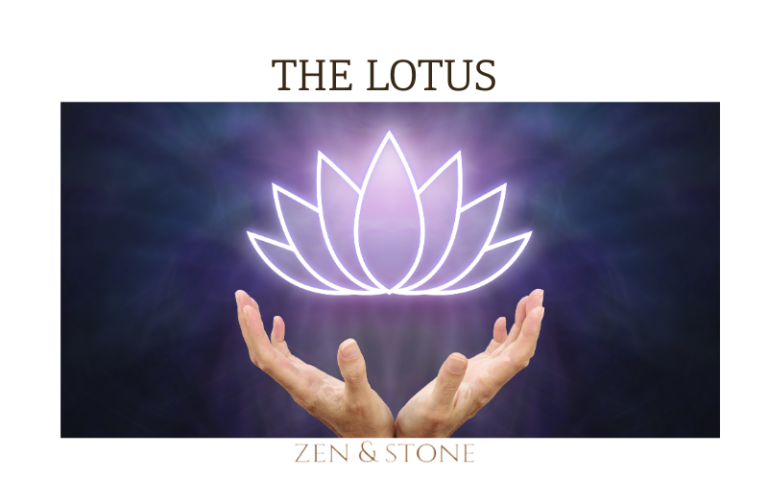
The lotus is a well-known symbol of purity and enlightenment, and has been used in various cultures and religions for centuries. Its roots are in muddy water, but the lotus flower rises above the mud to bloom clean and fragrant. In Buddhist art, a fully blooming lotus flower signifies enlightenment, while a closed bud represents a time before enlightenment.
In traditional Eastern medicine, the lotus plant has been used for its healing properties for generations. It is believed to have anti-inflammatory and antioxidant effects, and is used to treat a variety of ailments such as diarrhea, fever, and skin irritations. The lotus is also used in cuisine, particularly in Southeast Asian countries, where it is used in soups, salads, and desserts.
The lotus is a popular symbol in Hinduism as well, where it is associated with the gods Vishnu, Brahma, and Lakshmi. It is also the national flower of India. In Hindu mythology, the lotus is often depicted as a seat for deities and a symbol of creation and rebirth.
Overall, the lotus is a powerful symbol of purity, enlightenment, and healing, with deep roots in multiple cultures and religions.
The Yin and Yang
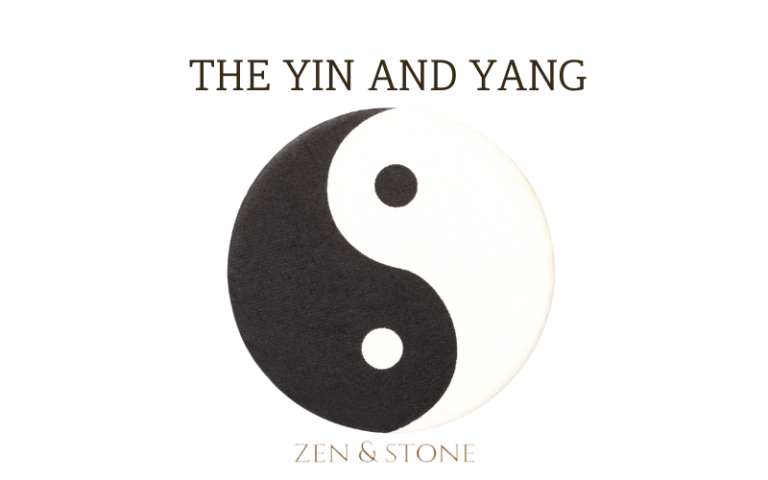
The Yin and Yang symbol is one of the most recognizable symbols in the world, representing the balance between opposing forces. The symbol consists of two halves, one black and one white, with a small dot of the opposite color in each half. The black half represents Yin, which is associated with darkness, femininity, and passivity. The white half represents Yang, which is associated with light, masculinity, and activity.
The principle of Yin and Yang is that all things exist as inseparable and contradictory opposites. They are interdependent and cannot exist without the other. The symbol suggests that everything in the universe has both Yin and Yang aspects, and that the two are constantly in a state of dynamic balance.
The Yin and Yang symbol has been used in Chinese philosophy for thousands of years and is still widely used today. It is believed that by understanding and balancing the Yin and Yang energies within ourselves, we can achieve harmony and good health.
Some ways to incorporate the Yin and Yang symbol into your life include:
- Wearing jewelry or clothing with the symbol
- Using the symbol in home decor
- Practicing Yin and Yang yoga or Tai Chi
- Eating a balanced diet of Yin and Yang foods
Overall, the Yin and Yang symbol represents the balance and harmony between opposing forces, and can be a powerful tool for achieving balance and good health in our own lives.
The Mandala
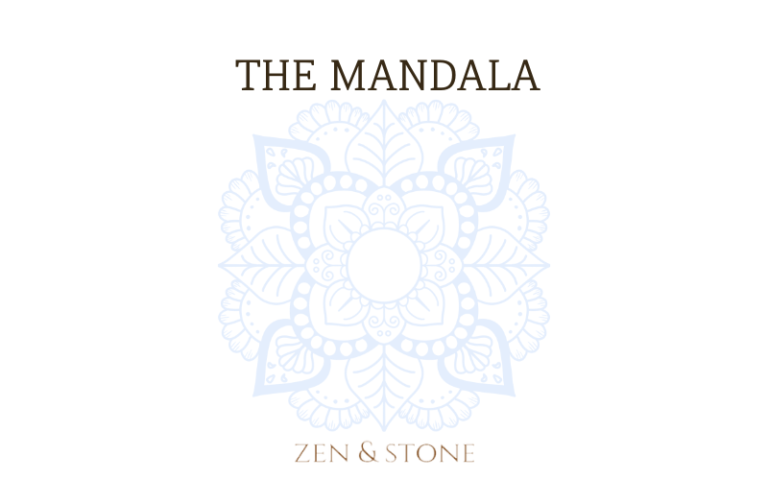
The mandala is a spiritual and ritual symbol in Asian cultures. It is a circular design that represents the universe and is used as a guide for several practices, including meditation. The word “mandala” comes from the Sanskrit language, meaning “circle” or “center.”
Mandalas are often used as a tool for healing and self-discovery. They are believed to help individuals connect with their inner selves and promote a sense of balance and harmony. Mandalas are also used to aid in meditation, as the intricate designs help to focus the mind and calm the body.
In Tibetan Buddhism, mandalas are used as a visual aid for meditation and are often created using colored sand. The intricate designs of the mandala are believed to represent the universe and the path to enlightenment. Once the mandala is completed, it is destroyed to symbolize the impermanence of life.
Different colors and symbols are used in mandalas to represent different aspects of life. For example, the color red is believed to heal attachments and fear and turn them into confidence, freedom, and power. The color green is said to heal jealousy and turn it into unconditional love, understanding, and accomplishment. The color blue is believed to heal anger and turn it into self-reflection, self-expression, and intuitive perception.
Overall, the mandala is a powerful spiritual symbol that has been used for centuries to aid in healing, meditation, and self-discovery. Its intricate designs and deep symbolism make it a valuable tool for anyone seeking to connect with their inner selves and find balance and harmony in their lives.
The Hamsa
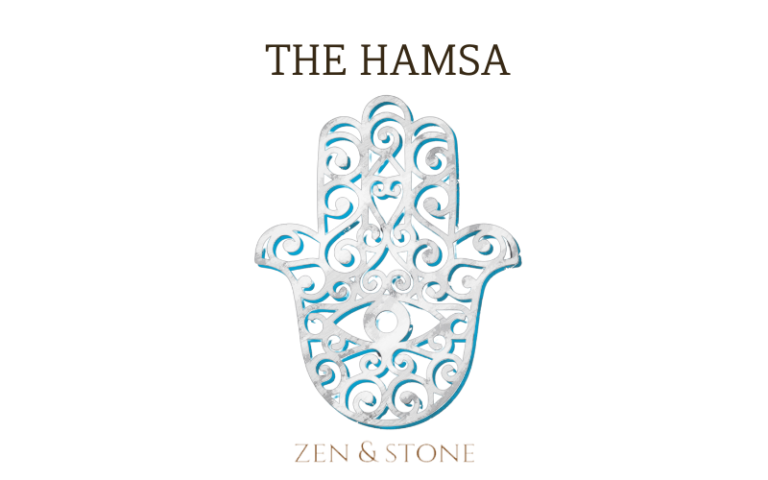
The Hamsa, also known as the Hamsa hand, is an ancient Middle Eastern amulet. It is believed to have originated in Mesopotamia and has been used by both Judaism and Islam. The amulet resembles a hand with three stretched fingers in the center and a curving thumb or pinky finger on either side.
The Hamsa is believed to ward off the “evil eye,” a curse believed to be cast by a malevolent glare. It is also associated with protection, good fortune, and blessings. The word “Hamsa” comes from the Arabic word for “five,” which represents the five fingers of the hand.
The Hamsa is a powerful symbol with different interpretations across different cultures and religions. In Judaism, the Hamsa is associated with the number five, which represents the five books of the Torah. It is also believed to represent the hand of Miriam, the sister of Moses and Aaron. In Islam, the Hamsa is associated with the hand of Fatima, the daughter of the Prophet Muhammad.
The Hamsa is often worn as jewelry or displayed in homes and businesses as a form of protection. It is also used in various forms of art, including paintings, sculptures, and tapestries. The Hamsa is a symbol of unity, peace, and protection, and its popularity continues to grow across different cultures and religions.
The Tree of Life
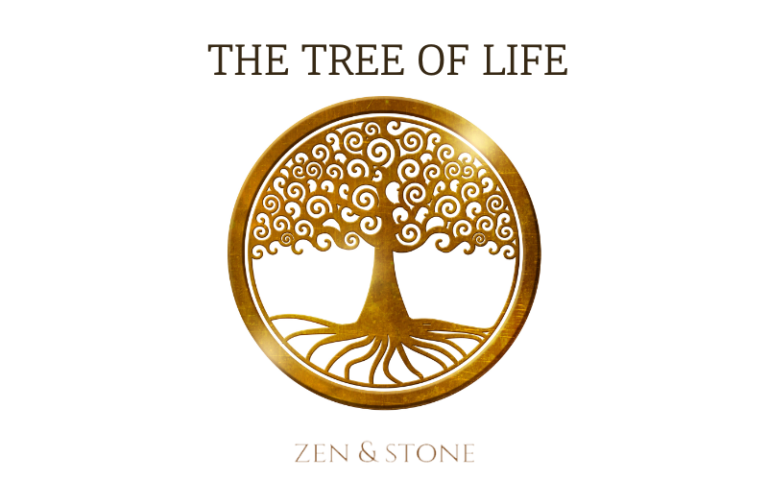
The Tree of Life is a spiritual symbol that has been used by many cultures throughout history. It is a representation of the interconnectedness of all living things and the cycle of life and death. The tree is a symbol of growth and renewal, as well as strength and stability.
In many cultures, the Tree of Life is seen as a bridge between the physical and spiritual worlds. It is believed to be a source of wisdom and enlightenment, and a connection to the divine. The symbol is often used in meditation and spiritual practices to help individuals connect with their inner selves and the universe.
The Tree of Life is a prominent symbol in many religions, including Christianity, Judaism, and Islam. In Christianity, the Tree of Life is mentioned in the Book of Genesis as the tree that was planted in the Garden of Eden. It is said to represent eternal life and the knowledge of good and evil.
In Kabbalah, the Tree of Life is a symbolic diagram that represents the nature of God and the structure of the universe. It consists of ten interconnected spheres called sefirot and 22 paths that connect them. Each sphere represents a different aspect of God and the universe, and the paths represent the ways in which they are connected.
The Tree of Life is also a popular symbol in modern spirituality and new age beliefs. It is often used as a visual representation of personal growth and spiritual evolution. The branches and roots of the tree are seen as representing different aspects of the individual, such as their thoughts, emotions, and experiences.
Overall, the Tree of Life is a powerful symbol that has been used for centuries to represent the interconnectedness of all things and the cycle of life and death. It is a symbol of growth, renewal, and spiritual enlightenment, and it continues to be a source of inspiration and guidance for many people today.
The Pentacle
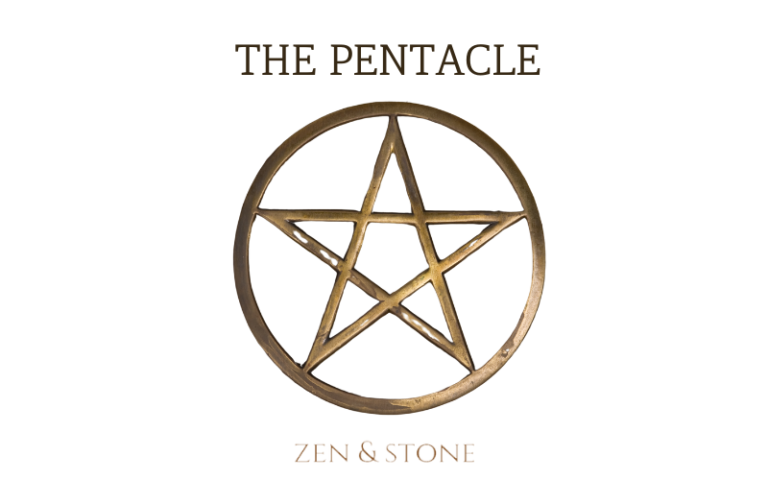
The pentacle is an ancient spiritual symbol that has been used in various cultures and belief systems for centuries. It is a five-pointed star with one point aligned upwards, representing the five elements from which man is made: fire, air, water, earth, and spirit. The pentacle is often associated with protection, manifestation, and balance.
The earliest known documents that depict the pentacle symbol are the Heptameron and the Key of Solomon. The Heptameron is a French collection of 72 short stories that mention the pentacle in one place. On the other hand, the 15th-century grimoire called the Key of Solomon shows dozens of pentacles throughout the text.
In modern times, the pentacle has become a popular symbol among pagans and Wiccans. It is often used in rituals and spells for protection, banishing negative energy, and invoking the elements. The pentacle is also commonly worn as a piece of jewelry, such as a pendant or ring, as a symbol of one’s faith or belief system.
Despite its association with paganism and Wicca, the pentacle has also been used in other cultures and religions throughout history. For example, in Christianity, the pentacle has been used to represent the five wounds of Christ. In Judaism, the pentacle is associated with the Star of David and the five books of the Torah.
Overall, the pentacle is a powerful and versatile symbol that has been used for centuries across multiple cultures and belief systems. Its association with protection, manifestation, and balance make it a popular choice for those seeking spiritual guidance and connection.
The Caduceus
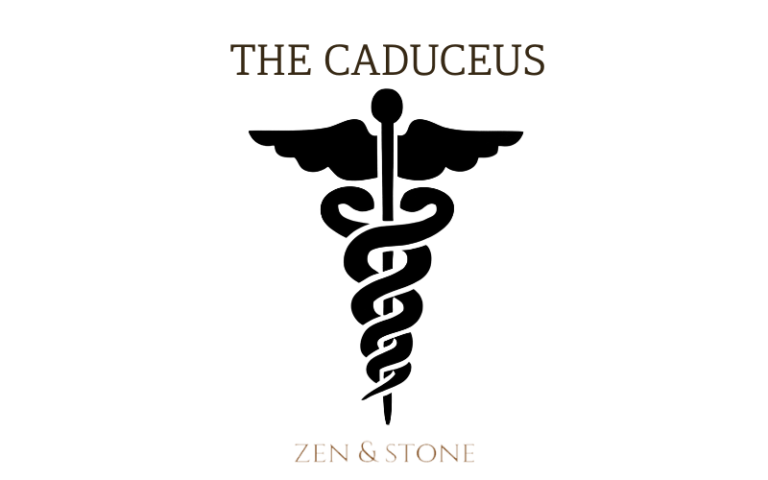
The Caduceus is a symbol that originated from ancient Greece and is often associated with the medical profession. It features two snakes winding around a winged staff with a globe on top. The Caduceus is often mistaken for the Rod of Asclepius, which is another symbol of medicine that features a single snake winding around a staff.
Despite the common misconception, the Caduceus is not a medical symbol. Instead, it is a symbol of commerce and trade that was used by the Greek god Hermes, who was also known as the messenger of the gods. The Caduceus was used to represent Hermes’ ability to guide and protect travelers, merchants, and thieves.
In modern times, the Caduceus has been adopted as a symbol of medicine by some organizations, particularly in the United States. However, this use of the Caduceus as a medical symbol is controversial, as it is seen by some as a misappropriation of a symbol that has no connection to medicine.
Despite this controversy, the Caduceus continues to be used by some medical organizations and is recognized by many people as a symbol of healing and protection.
The Triskelion
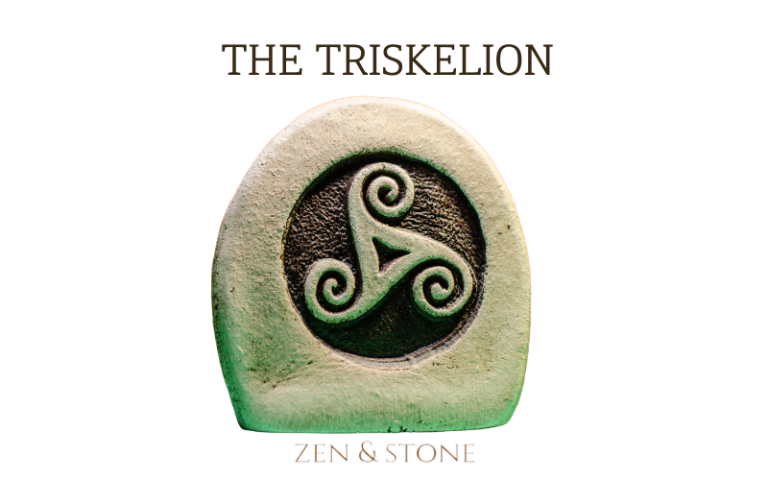
The Triskelion or Triskele is a well-known Celtic symbol that has been used for centuries. This triple spiral symbol is often associated with various meanings and is recognized across different cultures.
Meaning and History
The Triskelion has several interpretations, and its true origin is unknown. However, it is believed to have originated from the ancient Celts and their beliefs. The symbol represents the three aspects of nature – earth, water, and sky, and also symbolizes the three stages of life – birth, life, and death.
The Triskelion symbol has been found on ancient artifacts and structures across Europe, including Ireland, Greece, and Italy. It is also associated with the Isle of Man, where it is a national symbol.
Symbolism
The Triskelion is often associated with various meanings, including:
- The cycle of life, death, and rebirth
- The three elements of nature – earth, water, and sky
- The three aspects of the self – mind, body, and spirit
- The three stages of development – youth, adulthood, and old age
- The three realms – the physical, mental, and spiritual
The Triskelion is a powerful symbol that is believed to bring protection, balance, and harmony. It is often used in meditation and spiritual practices to enhance one’s connection with nature and the universe.
Usage
The Triskelion is a popular symbol in modern culture and is often used in jewelry, tattoos, and art. It is also used in various logos and emblems, including the flag of the Isle of Man.
Overall, the Triskelion is a fascinating symbol that has stood the test of time. Its meaning and symbolism continue to inspire and intrigue people across the world.
The Spiral
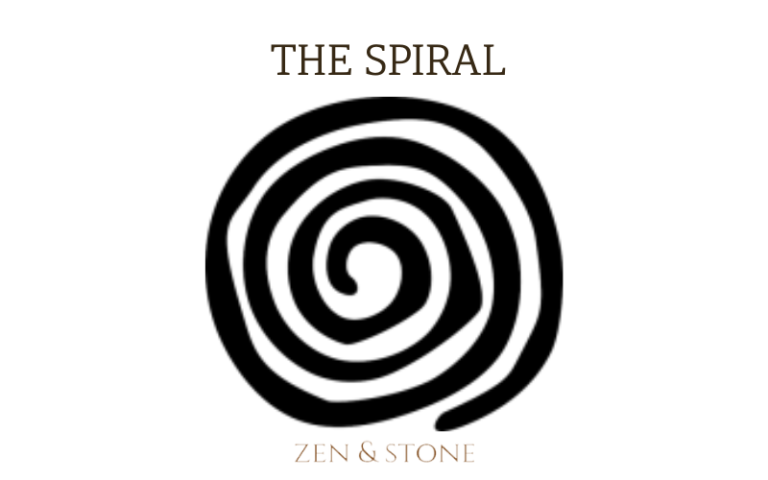
The spiral is an ancient symbol that has been used across multiple cultures and religions. It is a geometric symbol that represents a sacred and unbroken link between the macrocosm and the microcosm. The spiral is a bridge between the harmony in the cosmos and the harmony in us — an infinite resonance or life energy.
Spirals are one of the oldest decorative elements used by humans all around the world. They are not just for decoration, though — these symbols are also full of powerful spiritual meanings. The spiral symbolizes growth, evolution, and change. It represents the journey of life, from birth to death and beyond.
In ancient times, the spiral was often associated with the goddess and fertility. The spiral was seen as a symbol of the womb and the cycle of birth, death, and rebirth. The spiral was also used as a symbol of the sun, representing the cycle of the seasons and the passage of time.
The Caduceus is an ancient symbol around 6,000 years old. It’s a helix and a helix is a three-dimensional spiral. The Caduceus of Hermes is a medical symbol, and it is interesting how similar it is to the double helix of our DNA. The spiral has also been used in art and architecture, such as the spiral staircase in the Vatican Museum.
Overall, the spiral is a powerful symbol that represents growth, evolution, and change. It is a symbol of the journey of life, from birth to death and beyond. The spiral is a bridge between the harmony in the cosmos and the harmony in us — an infinite resonance or life energy.
The Hexagram
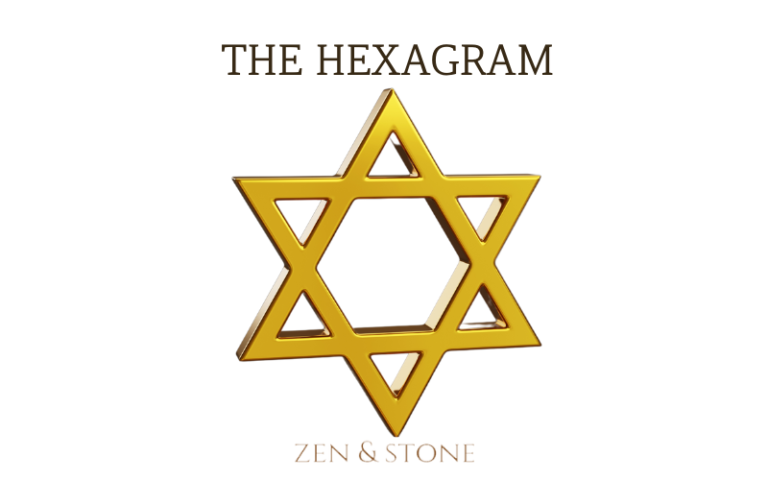
The hexagram, also known as the Star of David, is a six-pointed star that has been used as a symbol of Judaism for centuries. It consists of two overlapping triangles, one pointing up and the other pointing down. In Jewish tradition, the hexagram is believed to represent the connection between God and humanity, as well as the balance between the physical and spiritual worlds.
The hexagram has also been used in other spiritual and mystical traditions, including Kabbalah and alchemy. In these traditions, it is associated with the concept of harmony and balance, as well as with the elements of fire and water.
Some people believe that the hexagram has healing properties, and it has been used in various forms of alternative medicine. For example, it is sometimes used in Reiki healing to help balance energy and promote healing. Additionally, some people believe that wearing a hexagram pendant or carrying a hexagram talisman can provide protection from negative energy and promote spiritual growth.
Overall, the hexagram is a powerful symbol with a rich history and many different meanings. Whether you are interested in Judaism, Kabbalah, alchemy, or alternative medicine, the hexagram is a symbol that is worth exploring further.
Conclusion
The origins of these symbols are diverse, ranging from ancient Egyptian and Hindu cultures to Native American and Celtic traditions. Despite their different appearances and meanings, all of these symbols share a common thread of promoting healing and balance. Understanding the significance of these symbols can help individuals connect with their spiritual selves and harness their healing power.

Sorry, the comment form is closed at this time.